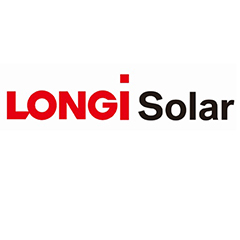In recent years, LONGi’s monocrystalline modules have been recognized by global customers for their excellent performance and reliability, leading to fast-growing shipments, industry-leading brand awareness and product bankability. This article will reveal how the reliable quality of LONGi’s modules is created from the aspects of product design, manufacturing and testing.
- Module Design
1.1 Design and Simulation
LONGi’s module design fully combines theoretical modelling, experimental results and historical experience, comprehensively considering efficiency, power generation capacity and reliability in various scenarios. LONGi’s product research and development center has established optical, electrical and mechanical models related to the design of photovoltaic modules, to carry out corresponding simulation calculation at the initial stage of product design, and choose the solution with the best comprehensive performance according to the results. In the fundamental research into new photovoltaic materials, testing and analysis of photovoltaic devices, product reliability and system integration, LONGi has forged an in-depth research cooperation with scientific research institutions such as the University of New South Wales in Australia to provide guidance for new product development.
1.2 Material Selection and Testing Standards
For the selection of module materials, LONGi has always maintained a highly cautious approach, usually preferring materials that have already been fully validated by the industry. For new materials and corresponding processes, LONGi carries out more rigorous evaluation and verification: first of all, it makes a theoretical analysis of the material’s performance, based on its composition and structural characteristics, followed by targeted and stringent tests. Finally, the module containing the material must pass a reliability test to a level which is twice (or even 3 times) more demanding than the IEC standard, only being approved for use after its successful completion.
In terms of selection of its suppliers, LONGi insists on cooperating with organisations with an industry-leading reputation and guarantee of long-term operations, to ensure the stability and reliability of material performance. With a corporate culture of being “reliable, value-added and fair”, LONGi advocates equality in dealing with supply chain partners, a win-win cooperation and innovation to promote the progress of both products and the industry in general.
1.3 Performance Verification
In addition to theoretical analysis and laboratory tests, the evaluation of the reliability and power generation capacity of photovoltaic modules also needs to be supported by outdoor test results. LONGi’s product research and development center has a 200kW field test station for special research, such as energy gain on the rear of bifacial modules in different application scenarios, light-induced and medium and long-term degradation of modules, anti-PID performance, shading analysis, analysis of working temperature and module hot spots. For research into the outdoor field test performance of modules under various climatic conditions, LONGi has successively cooperated with authoritative institutions including the China Electric Institute, TÜV SÜD, TÜV Rheinland, RETC, the China General Certification Center and DNV GL, and set up field test power stations in different locations around the world to fully verify performance under different conditions. These field test power stations have obtained a great deal of valuable data and provided strong support for the verification and analysis of the reliability of products and materials.
- Module Manufacturing
2.1 Comprehensive Quality System and Quality Control
LONGi has a comprehensive quality control system, and has obtained ISO 9001 and IEC TS 62941 certifications in the photovoltaic field. Quality management covers processes such as supplier management, new product development, product change, product production and test equipment measurement. With respect to production, quality and equipment information are collected through the MES (Manufacturing Execution System). The quality control of a factory is highly respected by customers and third-party factory auditors.
2.2 Advanced Manufacturing Capacity
LONGi’s 10GW-class cell and 20GW-class module capacity have both been built in recent years and high levels of automation not only greatly improve production efficiency, but also help to ensure the stability of the production process.
In addition, compared with other manufacturers in the industry, LONGi has a better product structure. At present, the mainstream products are the Hi-MO4 series and the half-cell monofacial and bifacial modules based on M6 silicon wafers. M2 half-cell modules will exit the market after delivery of existing orders. Unified product specifications bring great convenience for material procurement, product production and inventory management, and are also conducive to the optimization of product quality.





























